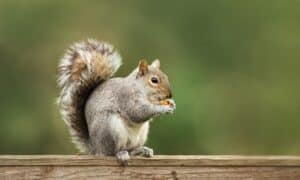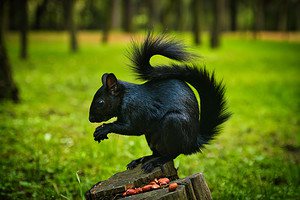There are hundreds of species of squirrels worldwide, and squirrels are widespread in suburban and urban environments. They are opportunists and have readily adapted to living near humans. This includes using our homes (often our attics) as nesting sites. Species of squirrels found in the US vary by state but have the eastern grey squirrel, the western grey squirrel, and the red squirrel. Here are the top 13 signs of squirrels in your house’s attic and a plan on how to remove them.
13 Signs There Are Squirrels in the Attic of Your House
1. Strange Sounds Coming From Your Attic
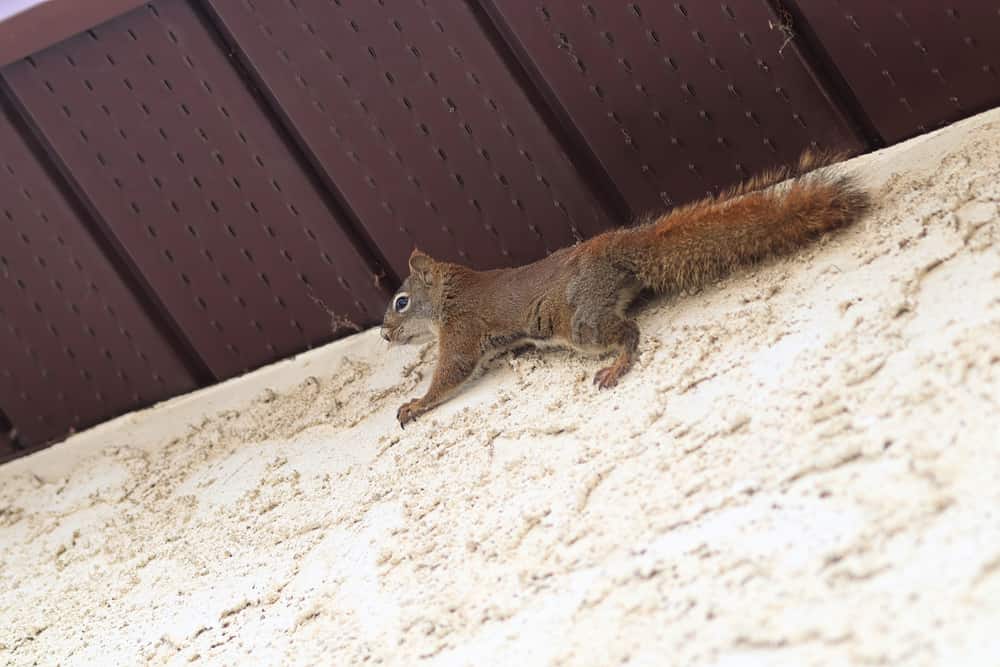
Squirrels make a lot of noise moving around attics!
©Amelia Martin/Shutterstock.com
As rodents go, squirrels are pretty giant! Eastern grey squirrels can weigh up to 1.5 pounds, and western grey squirrels can weigh over 2 pounds. This is a lot heavier than a mouse! So, when a squirrel moves around in your attic, you will hear it. Have you heard strange
scratching, rustling, banging, or scampering noises from your attic? Squirrels are most active in the early morning and late afternoon, so this is when they are noisiest. However, you may hear them at any time of the day and occasionally at night. You may also hear noises coming from within your cavity walls.
2. Visible Damage to Attic Insulation

Squirrels use attic insulation to make nests.
©brizmaker/Shutterstock.com
You may notice that large patches of your attic insulation are missing! This is probably because the squirrels have used it to construct nests. The same can be true for cardboard boxes, books, etc., which can all be chewed up to make ideal nesting material for squirrels.
3. Pungent Smell of Pee
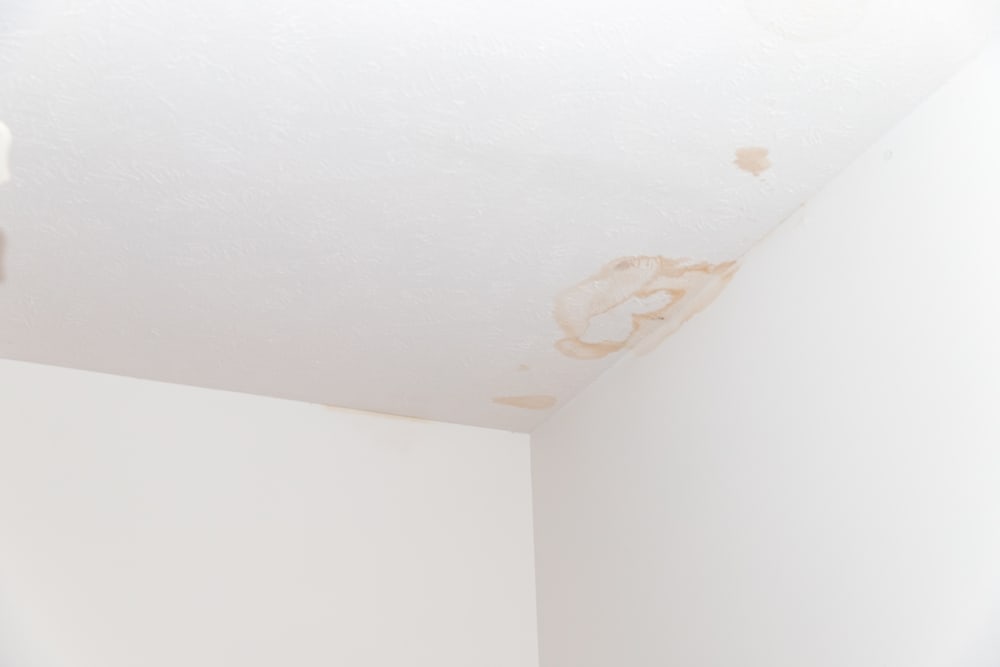
Stains on ceilings can be caused by squirrel pee.
©Chad Robertson Media/Shutterstock.com
Squirrel pee has a pungent smell of musk and ammonia. The odor is unlikely confined to the attic and can spread to the rest of the house through walls and vents. If many squirrels are in your attic, their pee can soak through to the ceilings below and cause staining.
4. Food Going Missing From Bird Tables
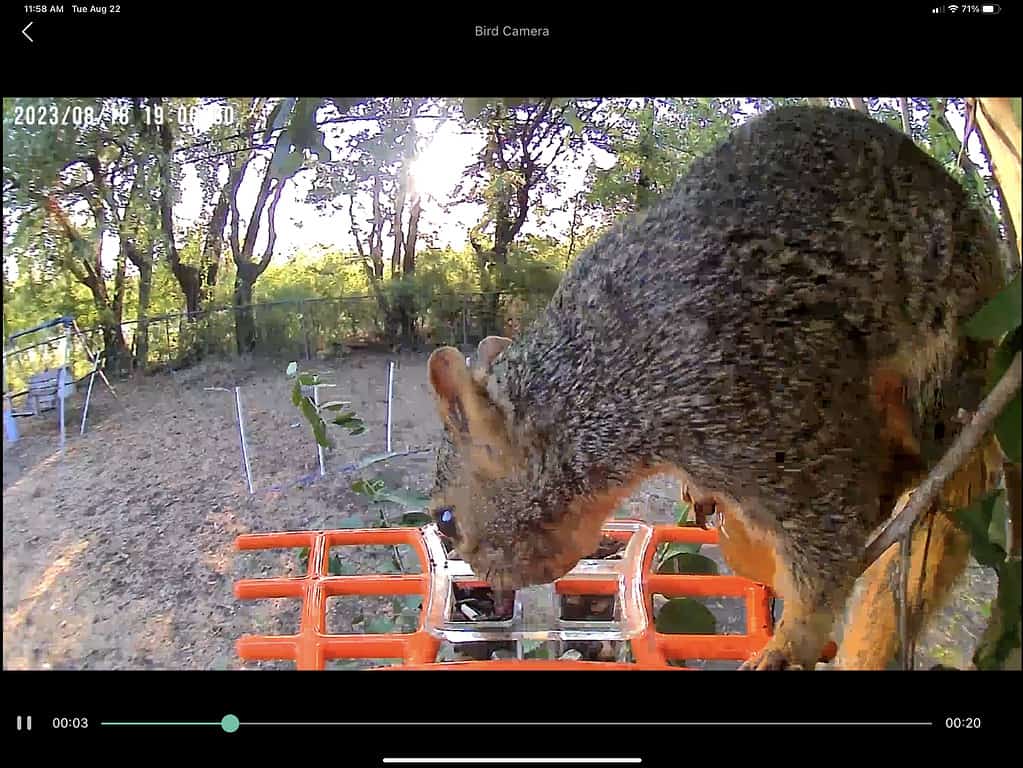
Squirrels love to pinch bird seeds from bird feeders.
©A-Z-Animals.com/GailNelson
Squirrels regard bird food as squirrel food! Have you noticed that the seeds you were putting out for the birds are disappearing much quicker than they used to? This can signify that you have squirrels in your garden and attic. You may have also noticed that your garbage bags have been torn open and the contents strewn around your yard. This could also indicate that squirrels frequent your property and set up a home in your attic.
5. Trees and Shrubs Surrounding Your House Stripped of Bark
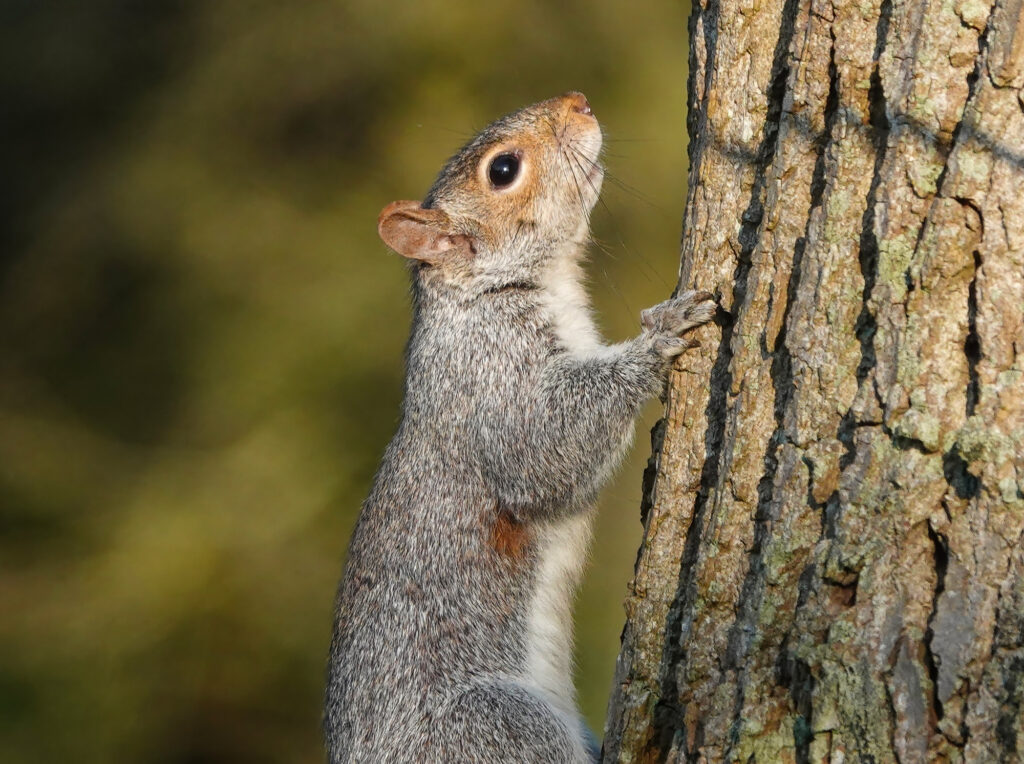
Squirrels can strip bark from trees and shrubs.
©iStock.com/Nigel Harris
Squirrels will often cause quite a lot of damage to the environment around their homes. Therefore, you may notice small holes in your lawn or the trees in your garden have been stripped of bark. You may also see that your plants have been eaten or destroyed. This indicates that squirrels live near your garden, likely in your attic.
6. Squirrels Seen Close to Your House

If there are lots of squirrels around your home, they may be nesting in your attic.
©ztsaries/Shutterstock.com
You may notice more squirrels than average running along your utility wires, climbing pipes, or scurrying across your fences or roof. If this happens, oversee them – you may be able to catch them gaining access to your attic or chimney. If you notice squirrels fighting around your home, it can indicate that the population has become too large for the available resources.
7. Pungent Sulfuric Smell of Dead Bodies

Bodies of dead squirrels in attics cause a pungent smell.
©Nihat Boy/Shutterstock.com
As is the case with all living things, squirrels will eventually die. If they consider your attic to be their home, then they can quickly end up dying in your house. Decaying bodies have a particularly distinctive and unpleasant smell. Depending on the stage of decomposition, they can have a pungent and sulfuric odor. If this smell spreads through your house, you may have a dead squirrel in your attic!
8. Squirrel Nests

Squirrel nests look like piles of twigs and leaves.
©Rob Dunn Nichols/Shutterstock.com
You may notice piles of leaves, twigs, and other debris in the attic. These are likely squirrel nests because they build their homes from whatever they can access. You might notice that they have nibbled away at the attic’s structure and used part of it. If you spot a squirrel nest, it is important not to approach it because nesting squirrels can be very aggressive.
9. Squirrel Droppings
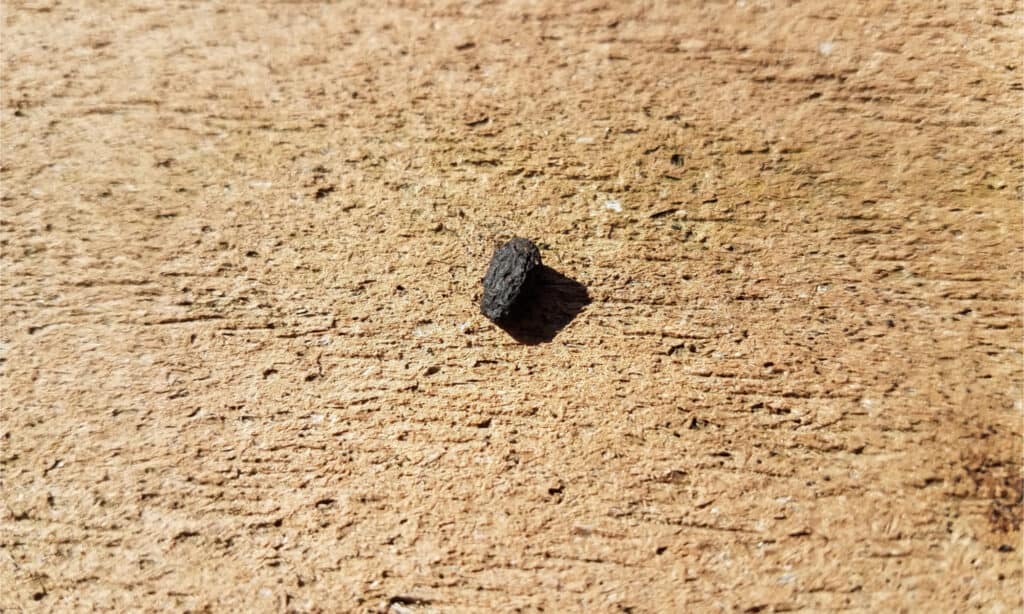
©stockphotofan1/Shutterstock.com
All squirrels have to poop! If squirrels live in your attic, you’ll find scattered droppings. You may also find them on your roof. It isn’t easy to distinguish squirrel droppings from those produced by several other animals, so you may need an expert to help you with this. Generally, they are oblong pellets that are around
3/8 inches long and about 1/8 inch in diameter. They usually have rounded tips with a more comprehensive center. Fresh squirrel droppings are brown but become pale brown or grey as they dry out.
Squirrel droppings can carry micro-organisms that are harmful to humans. Therefore, you need to be very careful how you handle them.
10. Acorns Scattered Around

Squirrels love acorns!
©Kasabutskaya Nataliya/Shutterstock.com
Squirrels do love acorns! They either eat them straight away or store them to be eaten later on in the winter. If you see a pile of acorns in the corner of your attic, it is very likely that a squirrel has placed them there.
11. Gnawed Roof Timbers
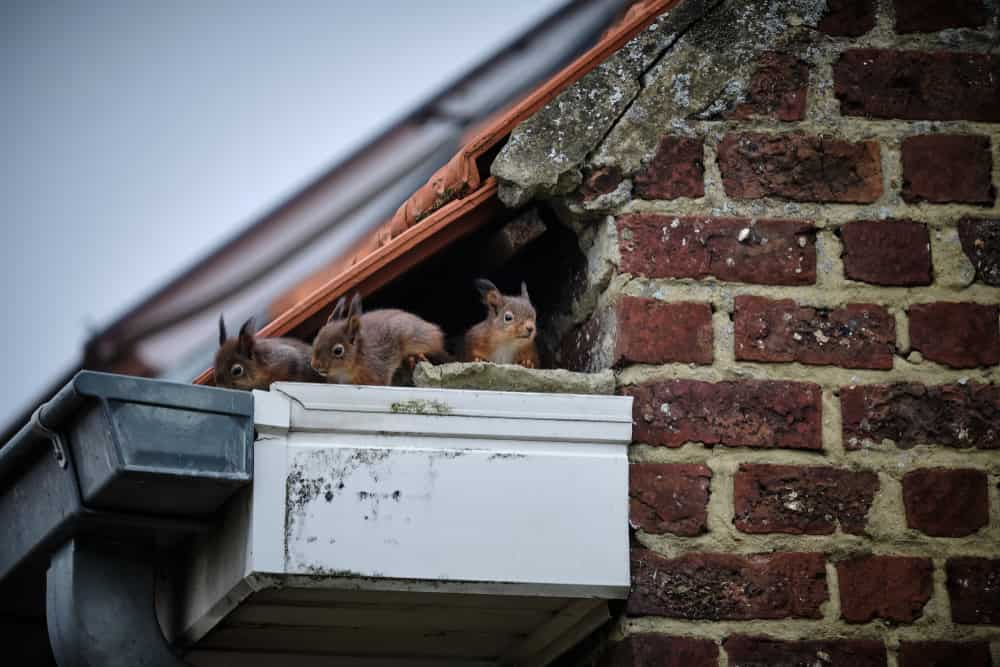
Squirrels can gnaw holes to gain access to attics.
©Fabrique Imagique/Shutterstock.com
Squirrels have long incisor teeth that keep growing. Therefore, they must constantly gnaw at things to keep them in check. To a squirrel, your roof timbers are like a tree, and they are happy to gnaw away at them. If you notice patches of damage and what look like teeth marks, this could indicate a squirrel infestation.
12. Gnawed Cables and Pipes
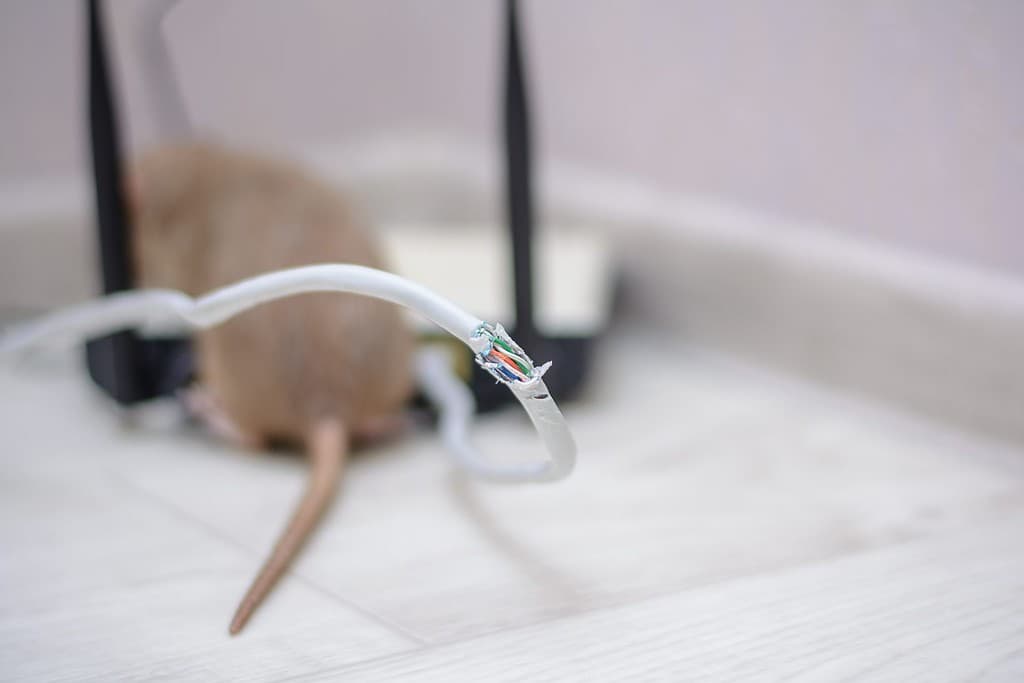
It’s not just rats that gnaw cables; squirrels do, too.
©alexeisido/Shutterstock.com
Squirrels are constantly gnawing at things, whether they are in a tree or your attic. If you notice bite marks on cables or pipes in the attic, a squirrel could have caused this. Be careful when inspecting damaged electrical wires, which can cause electric shocks.
13. Holes in Sidings, Soffits and Fascia Boards
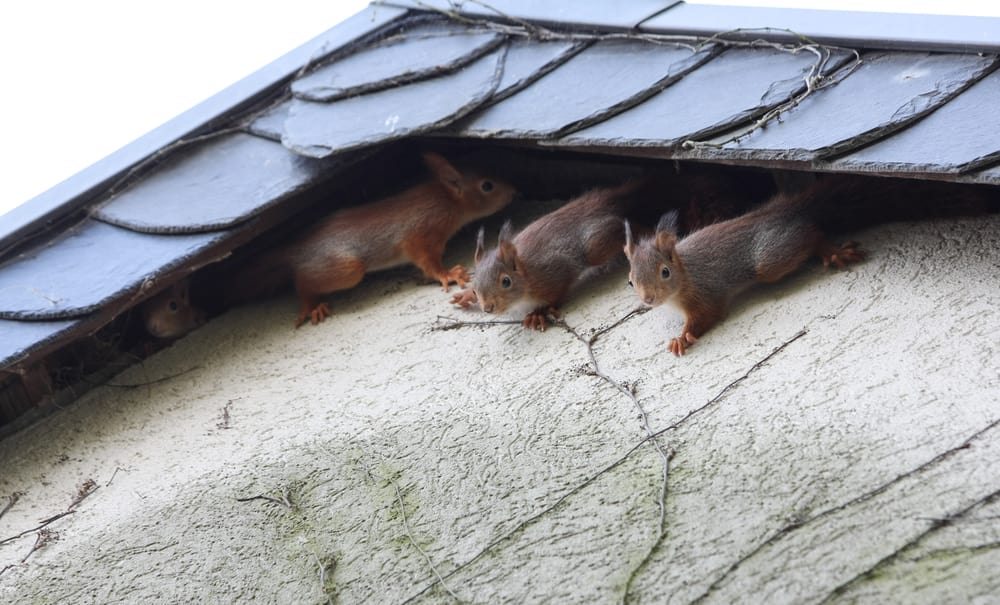
Squirrels can squeeze under roof tiles.
©Christine Kuchem/Shutterstock.com
Squirrels often enter attics through sidings, vents, or soffits. Therefore, inspecting these a few times a year is a good idea. If you notice any damage or gnawing to these timbers, it can be a sign of squirrels in the attic. Other places to check include around windows and between the roof and the fascia boards.
When Are You Most Likely Find Squirrels in Your Attic?
Squirrels can invade your attic at any time of the year, but it is more likely to happen when they are having their young. Attics in human houses are an excellent place for squirrels to raise their young families. This occurs in the spring and fall. Also, squirrels like to set up homes in human houses when the weather gets cold. This is why many people discover squirrel infestations at the beginning of winter.
Why Bother to Remove Squirrels From Your Home?
You may think sharing your home with a wild animal is pretty cool, but squirrels do not make great house guests! Here are the main reasons why you should remove them.
- They create holes that allow other rodents, such as rats, access.
- Squirrels can damage guttering, which allows water penetration.
- When they nibble on insulation, they damage it, making it less effective.
- They can chew electrical wires, which can cause electrical outages and even fires.
- If squirrels chew through water pipes, they can cause flooding.
- Squirrels gnawing through structural timbers, such as roof joists, weaken them, making the house structure unstable.
Are Squirrels Dangerous to Humans?
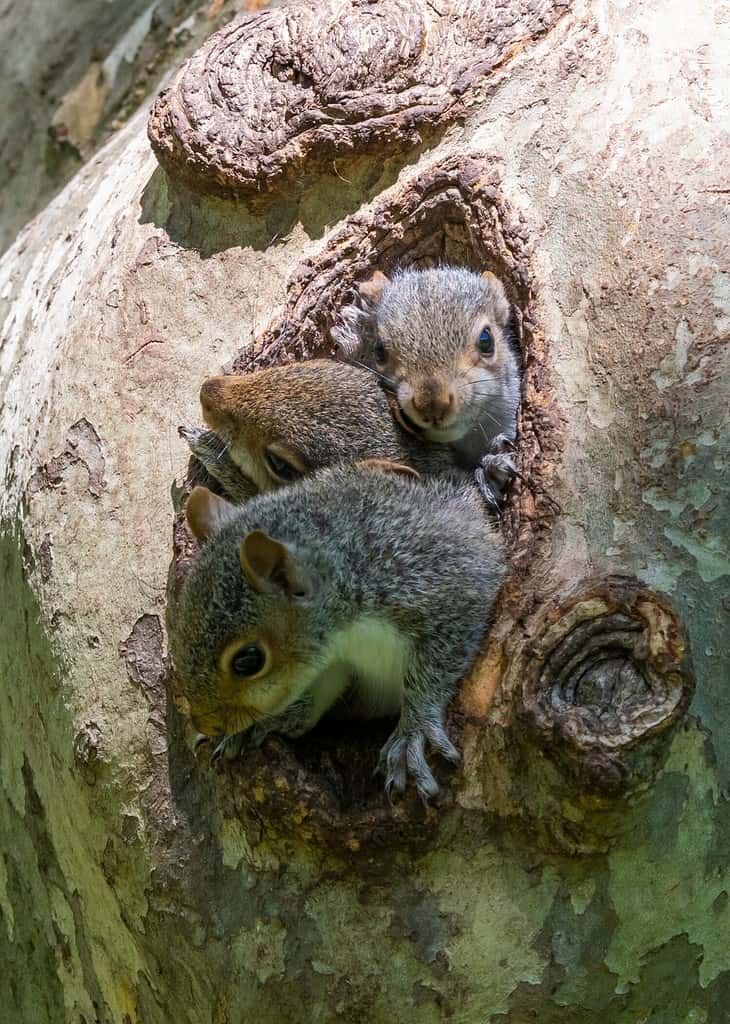
Squirrels can be aggressive when protecting their young.
©Marc A Sherman/Shutterstock.com
Squirrels can become territorial, especially when they are young. They can become aggressive, making it impossible for you to get into your attic without being bitten or scratched.
Squirrels can carry several pathogens transmitted to humans through contact with droppings or urine. Examples include leptospirosis and salmonellosis.
How Do Squirrels Get Into Your Home?
Squirrels are very good at spotting tiny gaps and squeezing through them. It is common for them to enter attics through unscreened vents or holes in fascia boards or roofs. Even if there is no existing hole, squirrels may be able to create one. They can gnaw through soffit and facia boards using their sharp teeth to get into your attic space. Some squirrels can chew through window frames and even through lead rain flashings to get into houses! They also gain access through chimneys by getting under roof tiles.
Sometimes, they enter ground-level houses and go up to the attic. However, it’s more common for them to climb up the side of your house and then enter at roof level. Squirrels will have no problems climbing up the vertical walls of your house. If you’ve ever seen a squirrel scaling a tree at speed, you will know how true that is!
How to Remove Squirrels From Your Home
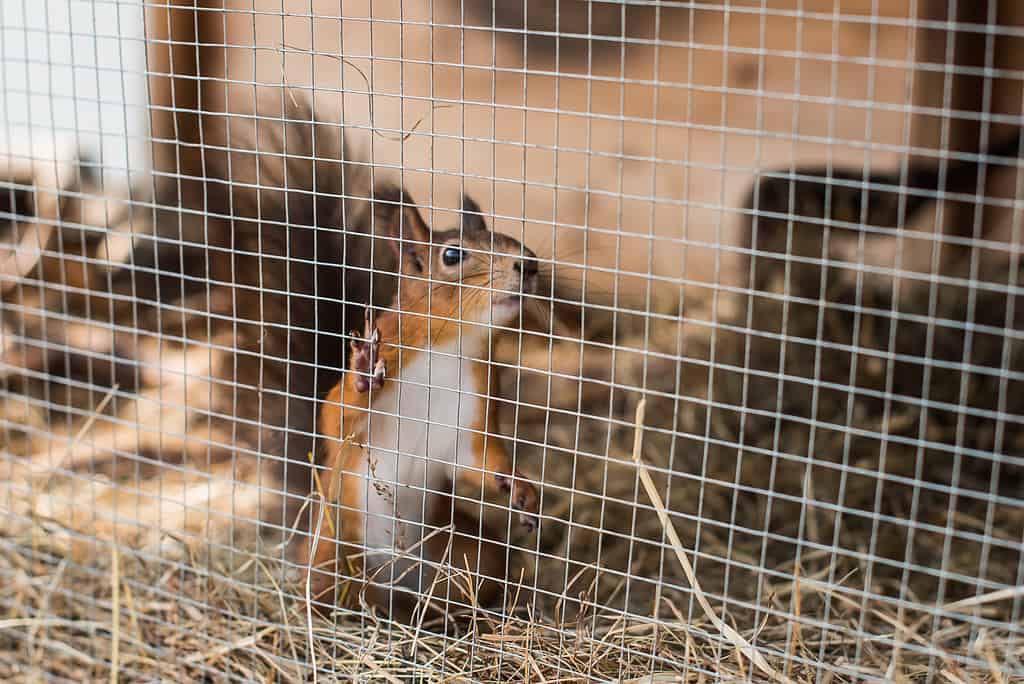
If you trap squirrels in your attic, make sure that it is legal for you to release them into the wild.
©Bargais/iStock via Getty Images
Removing squirrels from your home is not as easy as scaring them away because they can be aggressive. You also cannot simply board up the hole they use for access because you may trap them. They will either gnaw their way back out, causing more damage, or die in the attic, causing a horrendous smell. If you trap the adults outside and they have young inside the attic, they can be particularly aggressive. Squirrels in this situation have even thrown themselves against walls and windows, which is very distressing for the squirrels and the human occupants of the houses.
The best option is often to call in professional pest removal services. If you decide to remove them yourself, you must first drive them out of your attic space. You can use household cleaners with strong odors and special squirrel repellents. Bright lights and loud noise (a radio) will also make the squirrels want to move home.
You could also use squirrel traps baited with peanuts or peanut butter. However, releasing gray squirrels back into the wild is illegal in some countries, such as the UK. If you find one in your home, you are required by law to kill it humanely.
How to Prevent Squirrels From Getting Into Your Attic
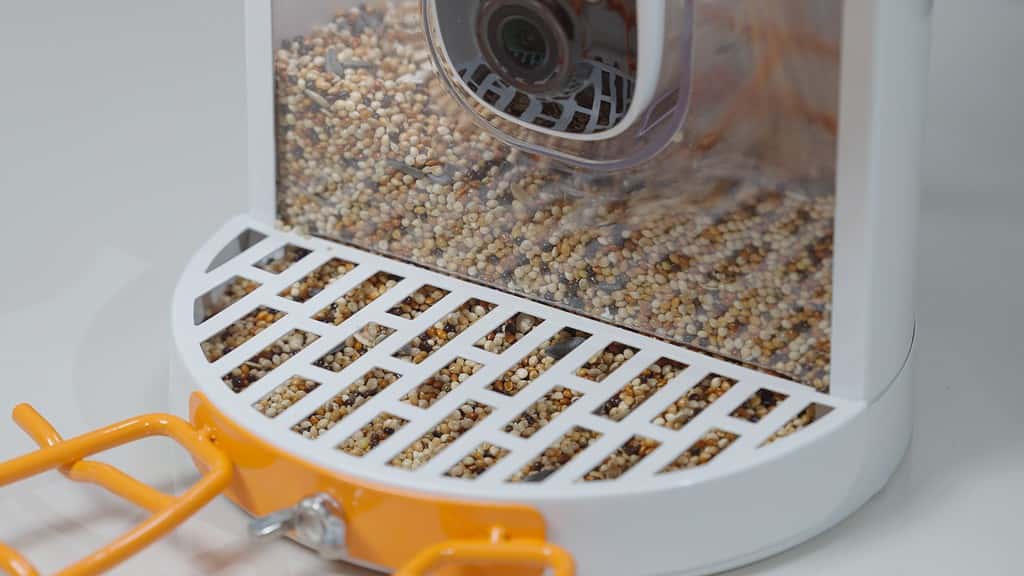
Squirrel-proof bird seed tray.
©Press photo – License
Here are some top tips to stop the squirrels from coming back once they have been removed or to prevent them in the first place.
- Trim tree branches overhanging your roof to make it harder for squirrels to gain access.
- Regularly check for the holes at the roof level, around the chimney, or windows. Seal up any holes with 1/4-inch hardware cloth or sheet metal.
- Cover vent holes and the top of your chimney with mesh screens. First, check that you are complying with safety laws relating to chimneys.
- Seal gaps around wiring and plumbing fixtures using mesh or metal flashings and finish with caulk or spray foam.
- Use a pole guard on your power pole to block squirrels from reaching your overhead lines.
- Use a line guard on overhead cables that run into your house for TV, power, etc.
- Don’t attract squirrels to your property in the first place by sealing garbage in metal or plastic containers.
- Use a bird feeder with a gravity-operated treadle, and don’t let spilled food accumulate.
Summary of the 13 Signs There Are Squirrels in the Attic of Your House
| Number | Sign |
|---|---|
| 1 | Strange sounds coming from your attic |
| 2 | Visible damage to attic insulation |
| 3 | Pungent smell of pee |
| 4 | Food going missing from bird tables |
| 5 | Trees and shrubs surrounding your house stripped of bark |
| 6 | Squirrels seen close to your house |
| 7 | The pungent smell of pee |
| 8 | Squirrel nests |
| 9 | Squirrel droppings |
| 10 | Acorns scattered around |
| 11 | Gnawed roof timbers |
| 12 | Gnawed cables and pipes |
| 13 | The pungent sulfuric smell of dead bodies |
Summing Up Signs There Are Squirrels in the Attic
If squirrels live in your attic, you can hear them, smell them, and probably see them around your house. You may also see signs of them feeding, droppings, or damage that they have done to the home’s structure or contents by gnawing. The squirrels must be removed because they can damage your property and carry diseases. You can remove squirrels by driving them out with repellents, noise, and light, but do not grab them because they can be aggressive. You can squirrel-proof your home by removing food that will attract them, cutting tree branches that overhang your roof, and regularly checking for and sealing access holes.
The photo featured at the top of this post is © Jan Stria/Shutterstock.com
Thank you for reading! Have some feedback for us? Contact the AZ Animals editorial team.




